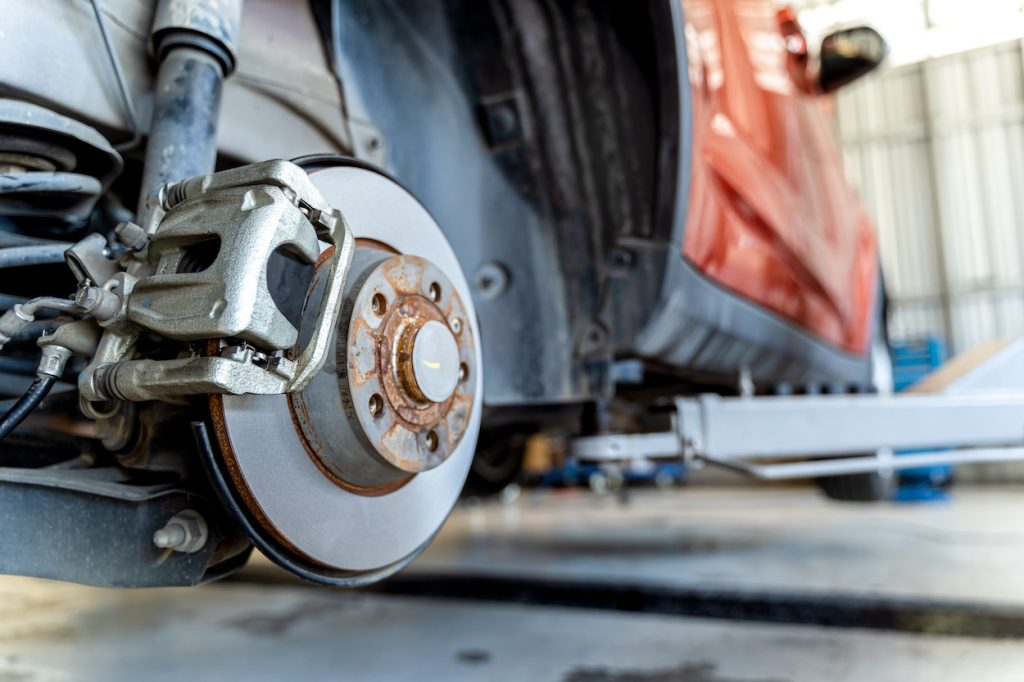With today’s technology, seeing someone operating a vehicle is already as normal as breathing. It’s even come to a point where people as young as teenagers can drive them. But regardless of how common they are, the risks are never removed from the picture. That’s why vehicles everywhere – be it a mechanical bicycle or a sports car – are designed with countermeasures to tackle these risks head-on. And some of them are brake pads and disc rotors.
What Are Brake Pads And Disc Rotors
Vehicles are created with transportation in mind. For them to go places, they function to move in whichever direction they’re pointed. Naturally, you’ll want them to stop once you’ve reached your destination or something came up on the road. That’s what brake systems are for.
Considering how complex vehicles are designed, it’s already a given for them to contain multiple systems to fulfil a specific task. Since it’s their purpose to stop the machine by command, brake systems are most likely the most crucial part of any vehicle. Thus, they demand the most attention by conducting regular inspections to check if there’s anything that needs to be replaced.
These brake systems mainly consist of brake pads and disc rotors. Brake pads handle most of the work in stopping the vehicle. To make this happen, friction is put into play. Since they’re located on either side of a rotor, they squeeze the rotors once pressurized fluid comes from the driver pressing the brakes. So, with this set-up, it’s safe to say that the rotors provide the contact surface while brake pads force the wheels to slow down to a stop.
How To Break In Newly-bought Brake Pads And Disc Rotors
With the brief overview of how the brake systems work out of the way, there are other matters you need to worry about. Breaking them in (or bedding) is essential, especially if you just had them replaced with new VMAX brakes or other brake manufacturers. However, you’ll find that this procedure isn’t as simple as you’d think.
1. Find A Safe Location
Since you’ll be running a test drive on a vehicle, you need all the space you can get to ensure it’s completely safe from start to finish. You’re about to test your braking system, after all. With this in mind, driving on a flat, open road would be ideal. But you must ensure it’s not frequented by drivers. Otherwise, you’ll be found in the headlines for causing an accident.
2. Speed Up And Slow Down
Breaking in your new brake pads and rotors isn’t a necessity for an average driver. Nonetheless, you can’t check whether you’ve installed them properly or not if you don’t break them in. Therefore, you can see that this procedure works both as a test for the brake’s performance and how well they’re installed.
So, to start it off, it’s best if your speed reaches an average of 35 to 45 miles per hour. This way, your brakes will start to warm up.
Once you’ve stayed at that speed for a moment, slow down the vehicle by applying moderate brake pressure. Don’t come to a complete stop. This is to prevent your new brake pads from squeezing too hard against hot rotors. Because if that happens, you’re putting them at high risk of melting due to high temperatures.
Brand new brake disc on the car in a garage. Auto mechanic repairing a car.
3. Repeat The Process
Before your speed drops down below five miles per hour, accelerate it once more to 35 to 45 miles per hour. Then after a while, slow down again. Repeat this process four to five times; go even higher if you think it’s necessary. Always ensure you don’t hit the brakes too hard. Otherwise, your tires might lock up. Since your brakes are still new, even the slightest pressure should be enough to gradually slow down the vehicle.
4. Cruise At High Speed
After repeating the process a few times, get your vehicle to slow down enough to stop on its own. Let the brakes cool down for a moment. Once five to ten minutes have passed, it’s time you finish off the procedure with a little more kick.
Driving around 35 to 45 miles per hour is a relatively safe zone for average drivers. Yet those who drive track need something heavier to guarantee their braking system is up to speed.
Therefore, instead of 35 to 45, you need to accelerate up to 55 miles per hour. But it doesn’t stop there. Because instead of slowing down after a few minutes, you’re supposed to cruise at that speed for several miles before slowing down to a stop like before.
Why You Need To Break In Brake Pads And Disc Rotors
The braking system is vehicle equipment that plays a crucial part in any vehicle. Without it, you can’t stop your vehicle from colliding with anything. Hence, breaking in your brake pads and disc rotors is necessary to ensure they’re performing well right off the bat and to warm them up to prevent the pads from melting. On another note, this works to give you a feel for how they operate.
